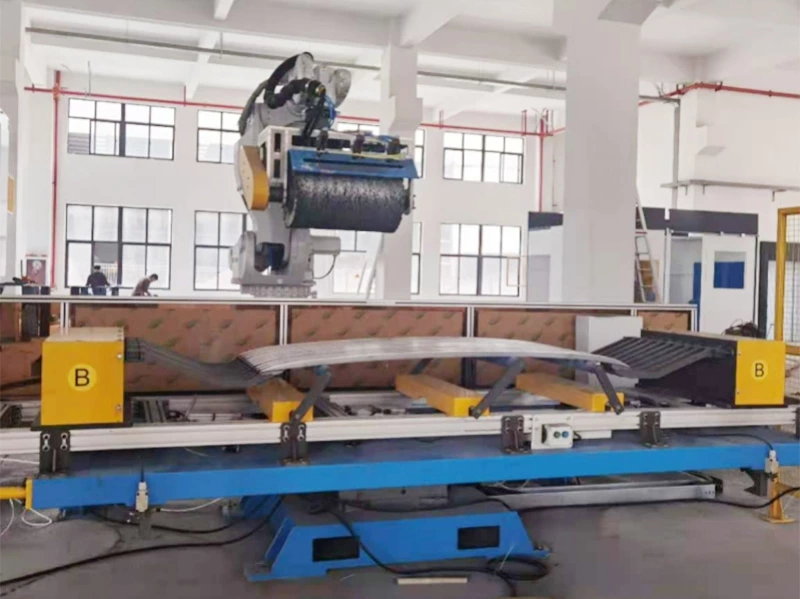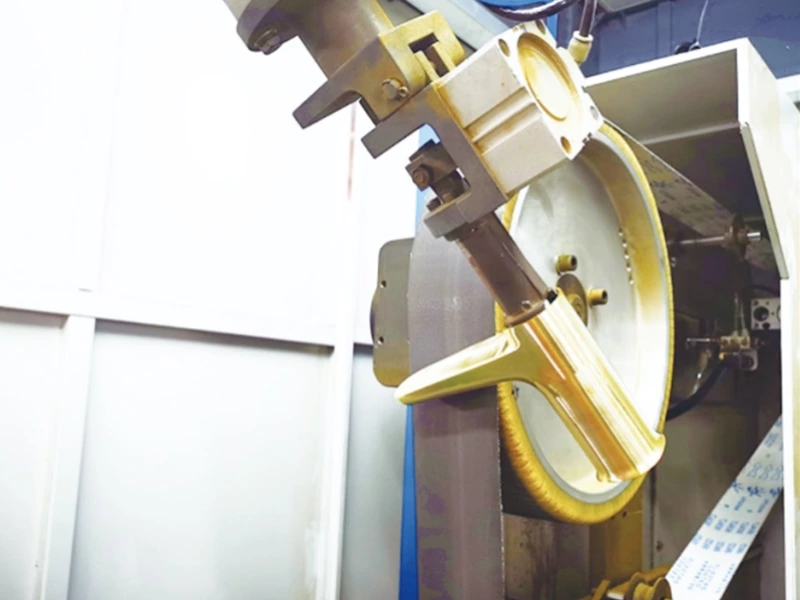What Are The Development Trends Of Robot Grinding And Polishing?
Development trend of robot grinding and polishing:
1. Compared with manual sanding
Using handheld pneumatic and electric tools to perform grinding, grinding, and other methods for deburring can easily lead to increased product defective rate, low efficiency, and rough and uneven surface of processed products.
Compared with handheld grinding, robot deburring can effectively improve production efficiency, reduce costs, and improve product yield. In addition, traditional casting cleaning technology uses the position control principle. Because it is necessary to determine the robot's running path as accurately as possible, the programming work is complicated and time-consuming.
2. With the development of robot force control technology, the use of floating mechanisms and tools can remove burrs flexibly, just like a human hand sliding over the burrs of the workpiece, which can effectively avoid damage to the tool and the workpiece, and absorb errors in various aspects such as workpiece and positioning.
The force control software consists of two advanced core functions. One is the pressure control function. When the robot is grinding and polishing the casting, this function can keep the pressure of the tool on the workpiece unchanged.
The other is the variable speed control function. When the robot is deburring and deburring the surface or parting line of the casting, this function can continuously control its operating speed and automatically slow down when encountering a large protrusion.
3. Automated grinding robots are an important development direction of complex product processing technology.
The realization of automation has a positive effect on improving product quality and improving product processing efficiency. The meaning of automated polishing and grinding is multifaceted, including automatic material grabbing, automatic grinding mechanism, quality inspection, abnormal handling, automatic stacking, etc.
From the development of customer grinding products, customer products are also developing in a diversified direction according to the actual needs of users.
On the one hand, users can develop automated products with various functions, which can integrate multiple automated functions and meet the different needs of multiple customers in structure; at the same time, for users in a certain industry of a certain scale, grinding robots will also go deep into the industry and launch grinding equipment that is more in line with the characteristics of the industry.
4. The practical application of grinding robots can be confirmed from many aspects.
From the perspective of usage, both the enterprises and products of grinding robots have increased their investment in the in-depth industry.
According to the survey of relevant users, there have been significant improvements in industries including hardware and bathroom, building hardware, auto parts, tableware, and handicrafts. Grinding robot technology is generally used on new mechanical equipment in these industries, and a variety of needs are presented.
5. The use of grinding robots for grinding helps to improve processing effects, improve product quality, improve production efficiency, speed up programming progress, shorten cycle time, and reduce production costs.
It is an indispensable automated production equipment in the industrial production process. While meeting the needs of modern production of enterprises, with the continuous development of grinding technology, it is believed that the future grinding manipulator will create more possibilities for mankind and accelerate the process of industrial automation production.




